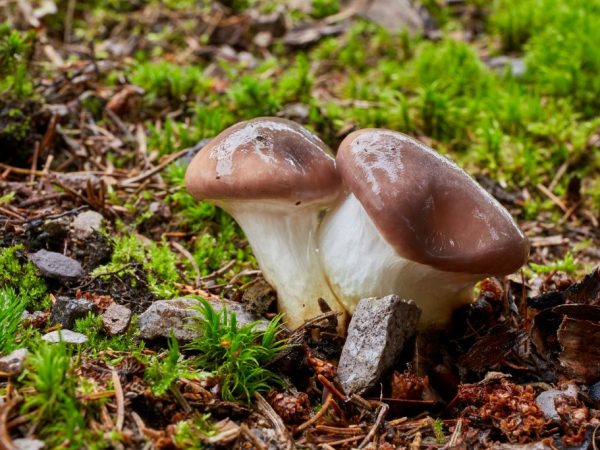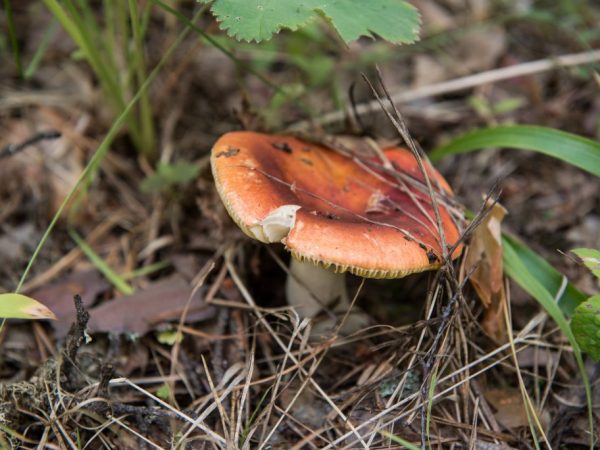Description of summer types of mushrooms
Few people know that mushroom hunting takes place not only in autumn. Each season is characterized by a specific set of species. Summer mushrooms begin to actively bear fruit in early June. Among them there are many suitable for consumption - these are champignons, russula, boletus, porcini mushrooms, chanterelles and others.

Description of summer types of mushrooms
Butterlets
Butterlets grow in coniferous forests. They got their name from the hat, which becomes sticky and shiny in rainy weather, as if it had been oiled.
They appear after the first summer rain. The disadvantages of this variety include a short period of existence and rapid eating by worms.
Appearance
Usually boletus is small and medium in size, outwardly reminiscent of flyworms. They have a hemispherical or conical cap. With age, it straightens and looks more like a pillow. Its maximum diameter is 15 cm. From above, the cap is covered with a skin that can be easily removed in young specimens.
They have a tubular hymenophore of light yellow color. The pulp is white, the cut turns blue or red. Butterlets age quickly and after 7-8 days they become tough, and the flesh darkens. Leg description:
- diameter - 1-3 cm;
- height - 5-10 cm;
- the bottom is white or matches the color of the cap;
- the surface is rough to the touch.
Poisonous analogues
Some edible boils are similar to pepper mushrooms. But it differs in smaller size, the diameter of the cap is 4-5 cm, the height of the leg is 4-6 cm. The peppercorn has a light brown tint, the flesh is yellow. It has a sharp, pungent aftertaste and it is because of this that it is considered inedible.
Irina Selyutina (Biologist):
Despite the glory of the inedibility of the pepper oil can, some mushroom pickers believe that it is possible to use it in oil cans. They believe that spicy lovers will like it either as a full-fledged mono dish or in "company" with other mushrooms, where it can successfully replace black pepper, usually added during frying.
The pharmaceutical industry, based on the substances it contains, produces a number of vital drugs, in particular those capable of stabilizing blood pressure and activating the brain.
It forms mycorrhiza with pine, therefore it prefers coniferous forests with a predominance of this tree species. Less commonly, it can be found in mixed, deciduous or spruce forests. Collection starts in June.
Time and place of fruiting
The first boletus is harvested in June, but sometimes they are found even in May. They grow in pine forests (they prefer young plantations), but some species bear fruit next to birches and oaks.
They do not like dark areas of the forest, therefore they are found in small clearings, forest edges and in thickets of young needles. Butterlets can grow in clusters (very often they form whole ribbons-snakes) and one by one.
Russula
Russula - summer edible mushrooms. There are more than 200 types of russula, most of them are suitable for eating raw.But there are conditionally edible and poisonous species.
In cooking, they are used in all types of cooking - they are boiled, fried, pickled or salted. They are also used to prepare fillings for savory baked goods, and some types are well suited for drying.
Appearance

Skin color varies.
The cap has a spherical shape, in mature specimens it is refined and flat. Skin color varies from white to light yellow, the cap is dry to the touch. Leg description:
- fragile;
- white, but darkens as it ripens;
- elongated, widened at the base.
One of the most delicious mushrooms of the russula genus is considered to be a greenish russula (pale green). It got its name from a light green hat with a pale center. It is slightly sticky to the touch and has a ribbed edge.
Time and place of fruiting
This species grows in mixed and coniferous forests, but more often in deciduous ones. It is more common on acidic soil. The "hunt" for him begins in July and lasts until September.
Irina Selyutina (Biologist):
In order for your russula blanks to please your family all winter, it is important to remember a few key points. The russula selected for salting must be properly prepared. This requires:
- Sort all fruiting bodies by size and color.
- Discard all spoiled mushrooms.
- You need to sort out russules very carefully because of their fragility.
- After sorting, the mushrooms must be washed and cleaned. If the pollution is great, then they can be:
- soak for several hours in cold water;
- pour boiling water over and after cooling the water, catch the mushrooms, which will become stronger.
- The mushrooms are rinsed under running water.
- The peels are removed from the caps (this will improve the appearance and increase the shelf life of the finished product).
The fungus always grows in small groups.
Poisonous analogues
The most common poisonous twin is the pungent russula. It contains a special compound - the alkaloid muscarine, which causes difficulty breathing and poisoning. Consuming large amounts of this product can be fatal.
Poisonous russula differs from its edible counterpart in appearance:
- a red hat of a light shade;
- the edge of the cap is down;
- pleasant fruity smell.
The pulp of this mushroom tastes bitter. It grows in late spring - early summer. The mushroom site can be found in coniferous forests, rarely found in deciduous forests.
Chanterelles
This type of mushroom is appreciated for its good taste and natural immunity to pests. Chanterelles contain chinomannose, a natural antihelmintic - a substance that kills helminth larvae, so worms hardly spoil them.
Chanterelles have a memorable appearance, so it is difficult to confuse them with other species. But chanterelles have poisonous counterparts, it is important to be able to distinguish between them before you start collecting.
Appearance
The cap and leg of these mushrooms are united into one whole, there are no visible boundaries between them. The whole body has one color: from light yellow to orange. The shade depends on the degree of ripening. The diameter of the cap is 5-10 cm, it is flat and with unfolded edges. In more mature organisms, it has a funnel shape. The plates are thick (to be precise, these are not plates, but folds).
The pulp is dense and fleshy, fibrous near the base. There is a faint smell of dried fruits, the taste of chanterelles is sour.
Time and place of fruiting
These mushrooms are harvested in summer, in June. They grow in coniferous and mixed forests, near pines, spruces and oaks.
This species loves dampness, is often found in dense grass, it can be collected next to moss. If summer is damp, chanterelles form a large mushroom spot.
Poisonous analogues
There is also a false chanterelle that bears fruit actively in August. More often found on stumps, it can be distinguished from a real mushroom by its description:
- orange-red color of the cap;
- the diameter of the cap is 3-5 cm;
- the shape of the cap resembles a funnel;
- smooth edge;
- thin stem, narrower at the base.
Conclusion
Mushrooms begin to grow in summer as early as June. Although this is still far from the best time to collect them, the first chanterelles, boletus, champignons and oyster mushrooms grow during this period.
In early summer, mushroom spots appear in dry deciduous forests on sandy soil, and a little later in birch and oak groves. Many early mushrooms have poisonous counterparts, so it is worth carefully examining the differences between them before harvesting.



